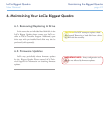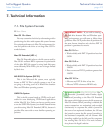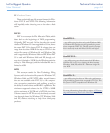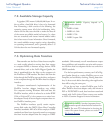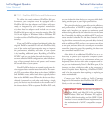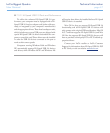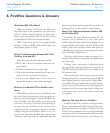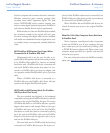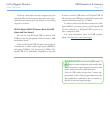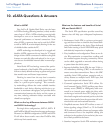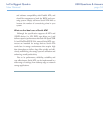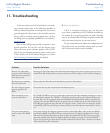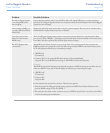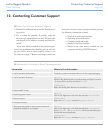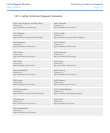
LaCie Biggest Quadra
User Manual
page 50
USB Questions & Answers
9. USB Questions & Answers
What Are The Benefits Of The USB Interfaces?
Cross-platform: Use your USB peripherals on both
Mac and Windows platforms.
“Hot Swappable”: No need to shut down or restart
your computer when adding or removing a USB de-
vice. Plug it in and its ready.
Automatic configuration: Once your device is con-
nected, your computer recognizes the device and au-
tomatically configures the necessary software.
Daisy-Chaining: with USB ports on your computer,
you can connect up to 127 peripherals using hubs.
Easy Installation: One standardized port and plug
combination makes it simple to connect.
What Is The Difference Between USB And Hi-
Speed USB 2.0?
e main difference is speed. e original version
of the interface is capable of throughput up to 12Mb/s.
Hi-Speed USB 2.0 supports data speeds up to 480 Mb/
s, making it 40 times faster than its predecessor. is in-
creased bandwidth translates into higher performance in
demanding applications requiring high transfer rates.
What Are The Ideal Uses For USB?
USB is perfect for more traditional connections such
as keyboards, mice, joysticks and scanners. ese types
of devices don’t require fast data transfer rates, and oper-
ate very successfully at the slower speeds.
What Are The Ideal Applications For Hi-Speed
USB 2.0?
Digital cameras, CD/DVD drives, hard drives and
scanners will all benefit from the added bandwidth and
performance gains of the new implementation of the
❖
❖
❖
❖
❖
USB standard. Hi-Speed USB 2.0 provides the neces-
sary fast data transfer rates that today’s devices require,
and combines the earlier specifications so older devices
that operated under the original USB standards will still
work with Hi-Speed USB 2.0.
Will USB Devices Run Faster When Connected
To A Hi-Speed USB 2.0 Bus?
Unfortunately, no. e Hi-Speed USB 2.0 specifica-
tion is specifically written to allow developers to design
higher speed peripherals that can take advantage of the
extra bandwidth. USB devices, though, will still operate
at 12Mb/s at full-speed and 1.5Mb/s at low-speed on a
Hi-Speed USB 2.0 bus. Even though USB devices won’t
run any faster, they can work alongside Hi-Speed USB
2.0 devices on the same bus. However, if you plug in a
Hi-Speed USB 2.0 device to a USB bus, the speed of
the Hi-Speed USB 2.0 device will decrease to 12Mb/s.
What Is A USB Hub?
Technically, you can connect up to 127 devices to a
single USB bus. For more than two devices, though, you
must make new connections using a peripheral called
a “hub.” A hub, which you hook up directly to a USB
connector on your computer, usually has 4 or 7 output
connections enabling you to connect the same number
of peripherals. One of the hub’s main functions is to re-
generate signals that lose part of their strength as they
are transmitted via the USB cable. By connecting yet
another hub to a connector on the existing hub, you can
then plug in a new set of peripherals and so on, up to a
maximum of 127.
Some hubs have no power supply and others are
self-powered. When you choose a hub, opt for the self-
powered variety, as they have their own AC adapter.
e most powerful hubs provide 0.5A of power to each
port.



